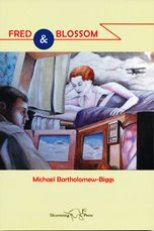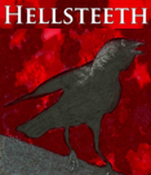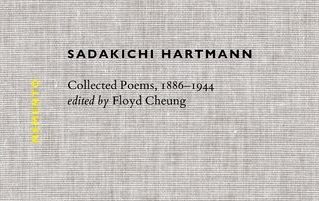Fred & Blossom by Michael Bartholomew-Biggs
– Reviewed by Afric McGlinchey –
Fred & Blossom focuses on the glamorous real-life story of Fred (F.G. Miles, a Sussex laundryman’s son) and Blossom (Maxine Forbes-Robertson, the product of theatrical parents, later to become Lady Rantendone), who fell in love while Fred was teaching her how to fly. The poems form a collective narrative of this somewhat scandalous love affair during one of the most exciting periods in aviation history. They also capture the excitement, ingenuity and courage of those early aviators, who not only flew, but created their own aircraft, simply by experimenting, learning about flight and design as they went along.
As though reading a biography, we are drawn in through the back stories of the two main characters. In ‘How Blossom Got her Name’ we learn that ‘The child was called Maxine to please her Aunt / who then declared Now I shall teach her / to be famous…We’ll call her Blossom. So will everyone.’ Fred, we discover, is an optimist, and quite philosophical: in the matter of clumsy touchdowns, ‘Ditches are the best / instructors, Fred once said, and we don’t pay them.’ (The Significance of Ditches (1) – Precision Flying).
In ‘Learning to Fly’, the poet repeats lines, flirting with language in the same way Blossom is clearly flirting with her flight instructor: ‘It’ is perfectly simple: /if you let the revs drop you may stall / and fall out of the sky in a spin. Blossom wonders / what it feels like to be falling, spinning into love. / It all seems perfectly simple.’
Of course, the attraction is reciprocal:
And when they met as if by chance
again (again?) he learned to hold her
eyes (but not too long) and keep her
with him longer by explaining
something else he cared about.(‘Fred Learns New Manoeuvres’)
The love affair is looked at from a number of points of view, including (poignantly) her cuckolded husband’s: ‘Not something you asked, of course – / not asked so not replied to’; a poem that ends: ‘I am not without a fire inside me.’ (‘Inigo’s Stiff Upper Lip’).
The poems are pleasurably rhythmic and rhyming, with witty run-on lines and visually aesthetic forms. One could easily mistake the early poems for doggerel, but the reader swiftly learns that they are in the hands of a pro. Bartholomew-Biggs is having fun with his material, and we are invited along for the ride. In ‘Blossom in a Sussex Village’, ‘She’s discovering London is chillingly distant from Willingdon – / not in miles or in minutes but units of ennui instead.’ What to do in such a place? ‘Blossom’s afternoon options: she can drive to the Downs or the sea-side; / she can envy the hawks or the gulls as they wheel overhead.’
The time-frame and class consciousness of the era is well captured, with references to Chamberlain, Amy Johnson and Virginia Woolf: ‘Hopgood dived. The City looked as empty / as Marie Celeste; / but with binoculars I made out people’s / social grades by the hats they wore.’ (‘My Experience with Hopgood’ (from the essay Flying Over London by Virginia Woolf.) We also glimpse ‘off-stage’ events separate from the couple’s private drama, to get more of an overall sense of the times.
Reading these poems brings home how much we owe to these early pioneers and risk-takers: ‘Conventional/design is unprepared / for stresses caused by separation: / flow stutters into gasps and sobs / of turbulence; while wings / like outstretched arms begin to snatch / and scrabble for support; and structure / flutters wildly as a panicked heart.’ (‘Preventive Maintenance’)
‘How to Make Yourselves an Aeroplane’ playfully uses the aircraft itself as a metaphor, in a character portrayal of the couple: ‘Fred can be the fuselage. He’s broad and blunt….his touch and hearing can detect/distress in engines…He has grown / green fingers with machinery’, while ‘For wings, use Blossom’s outstretched arms…she’s learnt to ride on optimism…always on the brink of generating lift.’
And we’re off, carried along by the lightness and buoyancy of tone, celebrating curiosity and innocence and an abundance of energy and optimism, even after wreckage and failure. In ‘Reach for the Sky’, Bartholomew-Biggs might well be speaking for himself when he says, ‘I’m no churchman / but if I were I’d worship / human bloody-mindedness.’
The romance of aviation captured Michael Bartholomew-Biggs early in life, as he grew up near Heathrow airport. This collections displays both immersion in his subject, and an ability to step into the shoes of his beloved characters. In ‘So How do you Design an Aeroplane?’ he writes: ‘Look for precious little help from birds except that silhouette of teardrop body, tapered wings, a tail that fans out aft for balance.’ Instead, he suggests, ‘Watch other people’s work. There’s much/ the miller or the yachtsman knows/ about the shape and trim of sails/ to stop them breaking when they borrow/ from the wind’. And from the carpenter, ‘the yin and yang/of weight and strength.’
Blossom begins to design aircraft ‘for the fun of it’: ‘after she’d redone / four weeks of sums it looked right – felt right too’. (Blossom at the Drawing Board’) What starts as an adventure soon turns in to ‘Full Production’: ‘Fred’s been awarded a government contract’ and from then on, ‘it’s not so much fun.’ The rest of the collection follows the highs and lows of their business life, as air travel takes off. Bartholomew-Biggs admits he’s taken liberties with the truth to create a more arresting story, but he leaves enough gaps for the reader to be able to speculate.
If a novel is a mirror along a high road, as Stendhal said, then this collection is an unusual ‘sight-line through a sudden gap into the past,’ when flight was the newest, most exciting thing. Fred & Blossom is a delight.




